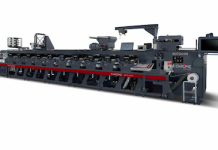Laurel Brunner from the Verdigris Project writes that from the artisans with their sustainably harvested honey to producers of handmade kitsch, we should all be asking our partners and supply chains for details of environmental aspects and impacts.
As we move more and more towards a ‘Do It Yourself’ model, the printing industry is gaining all sorts of new customers. From labels on demand for bespoke honey through to ambitious party signage and sportswear, print volumes are rising. Perhaps one of the biggest categories is book printing, as the world of self-publishing explodes. But rarely is the environmental dimension considered in any these categories of print.
The questions to ask is not always obvious and print providers are probably as much at a loss as print buyers. Here are some suggestions to ask of your print service providers whether you are self-publishing your literary opus or ordering leaflets and signage for the local car dealership.
The most basic questions to put relate to the state of their operations in terms of energy efficiency, age of printing systems, error rates, use of colour management and so on. A more ambitious approach would be to also ask your print service provider if they measure their carbon footprint. These calculations should include both the enterprise and individual print runs, using tools such as ISO 16759 (calculating the carbon footprint of print). Find out if they have set emissions targets with a goal to achieve net zero, and if so, when. Targets create a clear path towards continuous improvement and are the obvious way to get emissions down over time.
Questions about substrates can be a bit of a minefield but at least establish what your service provider’s policies are regarding the use of recycled materials and their sources and composition. They should also have a policy in place for waste handling and packaging preferences, such as moving away from plastic packaging. The same goes for special finishes and lamination: the print service provider should at least have considered their environmental aspects and impacts. The use of complex materials in print media production can often be reconsidered for instance with more sustainable designs. Design can make a big difference in energy usage, production efficiencies and recyclability.
There are wider policies to ask about the organisation’s committments to sustainability, such as certification for ISO 14001 environmental management or use of the ISO 12647 series for process control on press. Some print service providers put sustainability training and education to the fore. They may also have made public environmental commitments and have policies in place to support those obligations. Clearly such companies are to be preferred over print service providers who haven’t made such an effort.
Sustainability is a supply chain issue, whether we’re talking packaging and its disposal or signage and exhibition collateral. All parties should at least be aware of the sustainability of the print they commission, produce and use. And customers should reward those organisations committed to sustainability with their business. It’s the only way things can change for the better.
This article was produced by the Verdigris Project, an industry initiative intended to raise awareness of print’s positive environmental impact. Verdigris is supported by: FESPA (www.fespa.com), Fujifilm (www.fujifilm.com/sustainability/), HP (www.hp.com), Kodak (www.Kodak.com/go/sustainability), Practical Publishing (www.practicalpublishing.co.za), Miraclon (https://miraclon.com), Unity Publishing (http://unity-publishing.co.uk) and Xeikon (www.xeikon.com).
THE VERDIGRIS PROJECT
http://verdigrisproject.com/





















